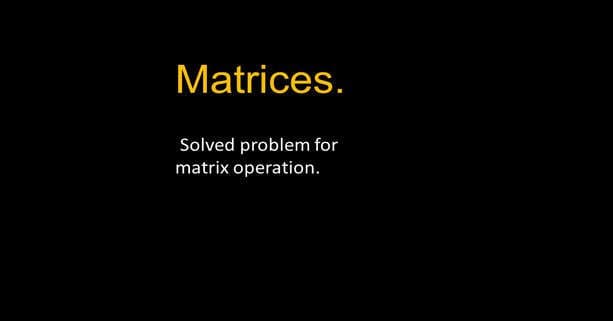Last Updated on February 5, 2024 by Maged kamel
Review of the commutative, associative, and distributive properties.
Before we will proceed to a solved problem for matrix operations, we will make review the commutative, associative, and distributive properties.
What is the commutative property?
The commutative property states that the numbers on which we operate can be moved or swapped from their position without making any difference to the answer. The property holds for Addition and Multiplication, but not for subtraction and division. In the next slide image, it is shown that we can add a to b, and also it is possible to express (b+a).
The multiplication (a*b) is the same for (b*a). This property cannot be applied for the case of subtraction and division, please refer to the splash learn link for more illustrations.
What is the associative property?
This property states that when three or more numbers are added (or multiplied), the sum (or the product) is the same regardless of the grouping of the addends (or the multiplicands).
Grouping means the use of parentheses or brackets to group numbers.
Associative property involves 3 or more numbers.
The numbers that are grouped within parenthesis or brackets become one unit.
Associative property can only be used with addition and multiplication and not with subtraction or division.
What is distributive property?
The distributive property is one of the most frequently used properties in math. In general, this term refers to the distributive property of multiplication which states that the
Definition: The distributive property lets you multiply a sum by multiplying each addend separately and then adding the products.
for instance 3*(2+3)=(3*2)+(3*3)=15. The next slide image contains a review of the three properties of Commutative, Associative, and Distributive Properties.

How can we apply these properties in matrix addition?
The first addition is commutative since adding two matrices A and B, is the same as adding B+A and also the multiplication of ab=ba..

Properties of matrix addition.
Five properties of matrix addition are included as quoted from Prof. Kuldeep Singh’s handbook.

A Solved problem for matrix operations.
As a practice to Matrix operations-part-2, we will use a solved problem with multiple operations to perform the necessary matrix operations.
Given three matrices A, B, and C, it is required to check the properties by estimating A+B and then B+A, to prove that A+B=B+A thru a numerical solved problem.
.

The next task is to estimate (A+B)+C and to compare the result with A+(B+C) to prove the associative law.
.

For parts c and D, add three matrices together by using different expressions.

Additional parts are solved as shown in the next slide image. Adding Matrix A to zero and the value of 4Aand for part G- Adding C+(-c) will lead to a zero matrix.

For a useful external link, math is fun for the matrix part.
This is the next post, Transpose of a Matrix (definitions-solved problem).

